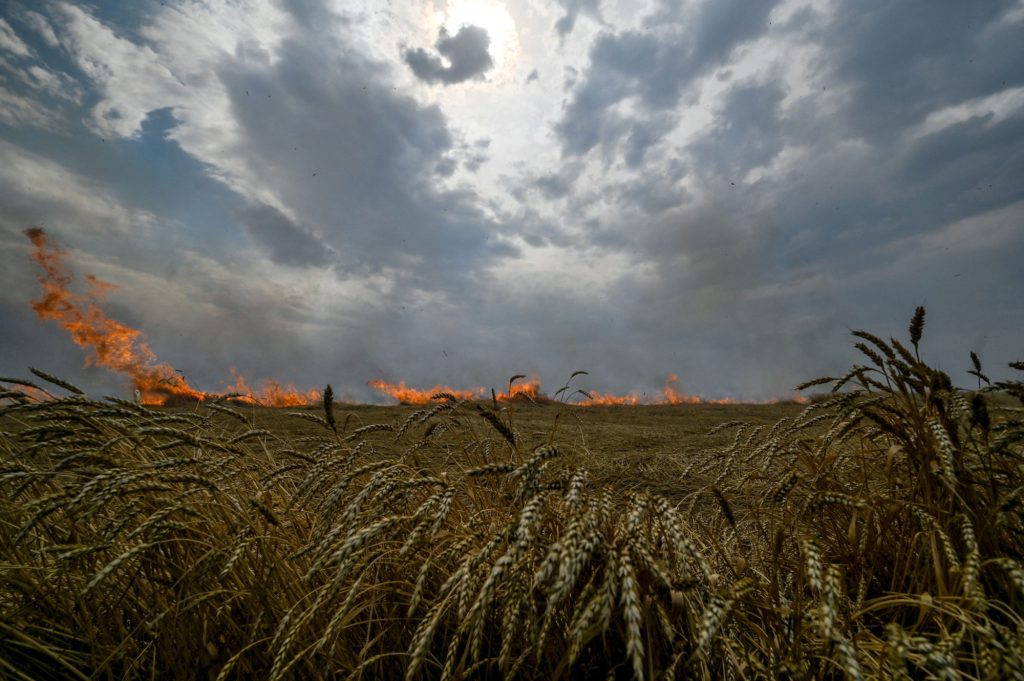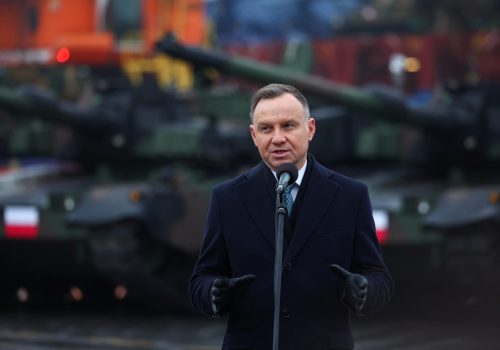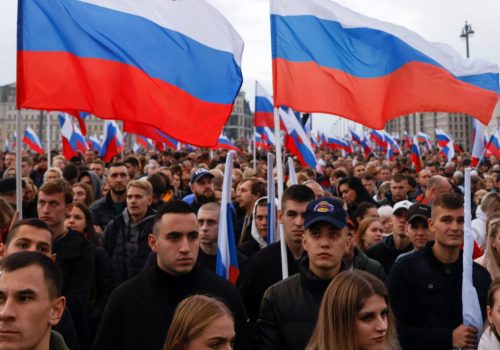While Western countries are providing desperately needed military and economic support to the Ukrainian government, private businesses in Ukraine are struggling largely on their own to survive the devastation caused by the ongoing Russian invasion of their country. This situation is simply not sustainable.
My company, Nibulon, is one of Ukraine’s largest grain producers and exporters. We were enjoying some of the best years in our 30-year history before the start of Russia’s full-scale invasion in February 2022. In a matter of weeks, we went from being a healthy business with a bright future to one battling for survival.
Around 20% of Nibulon’s assets are currently inaccessible in temporarily occupied regions of Ukraine. Other assets including grain elevators, barges, silos, and terminals have been destroyed. In 2022, our exports collapsed because we could no longer access our main export route through the port of Mykolaiv. Thousands of other Ukrainian companies have had similarly grim wartime experiences.
Stay updated
As the world watches the Russian invasion of Ukraine unfold, UkraineAlert delivers the best Atlantic Council expert insight and analysis on Ukraine twice a week directly to your inbox.
The liberation of Kherson and the surrounding region in late 2022 revealed the scale of the effort that will be necessary to restore agricultural production in regions of Ukraine subjected to Russian occupation. These regions are now believed to be among the most heavily mined areas in the world. De-mining will add significant costs and delays before farming activities can resume. Experts say that one day of war means one month of de-mining. We are already investing in de-mining equipment and personnel. At present, we calculate that with 20-25 people working ten hours a day, it will take three years to clear our fields in the worst affected areas.
To a greater or lesser degree, these problems are affecting the entire agricultural industry in Ukraine. The UN estimates that this strategically crucial sector of the Ukrainian economy has already suffered damages and losses of over $30 billion. Prior to the full-scale Russian invasion of February 2022, Ukraine had been steadily expanding its global reach as a food exporter and was widely seen as an emerging agricultural superpower. There is now a very real danger that Putin will succeed in bankrupting the Ukrainian breadbasket.
Like so many other Ukrainian companies, we have been adapting our business model to wartime conditions. We have successfully re-routed exports via land and rail and have built a new grain terminal on the Danube close to the Romanian border. However, we need to invest more in order to increase our exports and reduce the much higher transportation costs that farmers are now having to pay.
Eurasia Center events

One of the key problems facing the entire private sector in wartime Ukraine is the lack of access to financing because of prohibitively high borrowing rates domestically and internationally. Not surprisingly, war creates a significant risk premium. As a result, international capital markets are effectively closed for Ukrainian companies. Alternative forms of financing are urgently needed.
The United Nations and Turkey have succeeded in establishing a grain corridor to allow limited exports of Ukrainian grain through the Black Sea. Now is the time to establish a “financing corridor.” Just as the grain corridor has been a lifeline for Ukraine’s agricultural sector, the Ukrainian economy needs a mechanism to help private businesses secure immediate survival and safeguard their futures by investing to become more resilient and competitive.
A financing corridor would help ensure private businesses are not forced to close and can instead go on to underpin Ukraine’s reconstruction and recovery. The requirements are simple. First, lenders should offer Ukrainian businesses a standstill on their existing liabilities. A standstill will provide much-needed flexibility to address some of the immediate challenges to their operations. Second, international institutions should provide fresh financing for urgent working capital needs or strategic investments. Third, G7 countries and international financial institutions should offer partial guarantees to enable Ukraine’s major exporters to issue new debt at acceptable cost levels.
In the agricultural sector, enhanced financial support is essential as businesses look to repair or replace damaged equipment and facilities. The World Bank estimates the sector will require $18.7 billion in new investment over the coming decade. The next agricultural planting season is just around the corner. Without increased access to capital, farmers will not be able to obtain the equipment and fertiliser they need to sow their crops as planned.
If this happens, the consequences will be felt not only in Ukraine but far beyond the country’s borders as well. Reduced yields in Ukraine will impact global food security. The UN World Food Program estimates that the ongoing Russian invasion of Ukraine could increase the number of people at risk of acute hunger by 47 million, with the greatest impact on Sub-Saharan Africa.
Agriculture is a slow-motion business. If producers cannot invest today, the negative effects will be felt for years to come. The survival of the country’s major agricultural exporters is essential for Ukraine’s long-term economic reconstruction and recovery. It is also important for global stability. Good business strategy requires looking to the risks and opportunities that lie ahead. Western governments need to think beyond the immediate challenges of the war today and also consider what will be needed to secure Ukraine’s future.
Andriy Vadaturskyy is the owner and CEO of Ukrainian agribusiness Nibulon.
Further reading
The views expressed in UkraineAlert are solely those of the authors and do not necessarily reflect the views of the Atlantic Council, its staff, or its supporters.

The Eurasia Center’s mission is to enhance transatlantic cooperation in promoting stability, democratic values and prosperity in Eurasia, from Eastern Europe and Turkey in the West to the Caucasus, Russia and Central Asia in the East.
Follow us on social media
and support our work
Image: A fire destroys a wheat field as Russian troops shell fields to prevent local farmers from harvesting grain crops in Zaporizhzhia Region. (Photo by Dmytro Smolyenko/Ukrinform/ABACAPRESS.COM)




